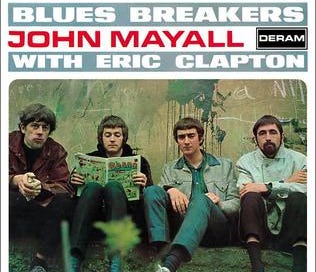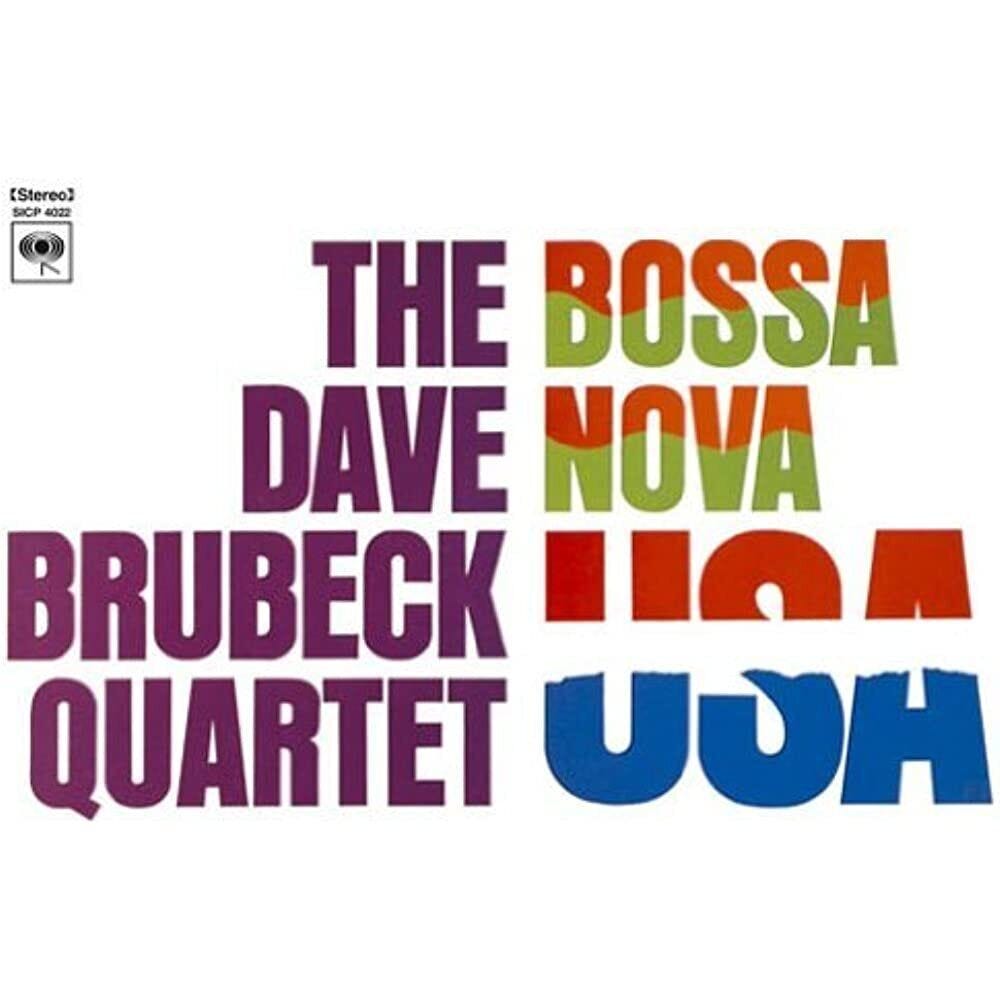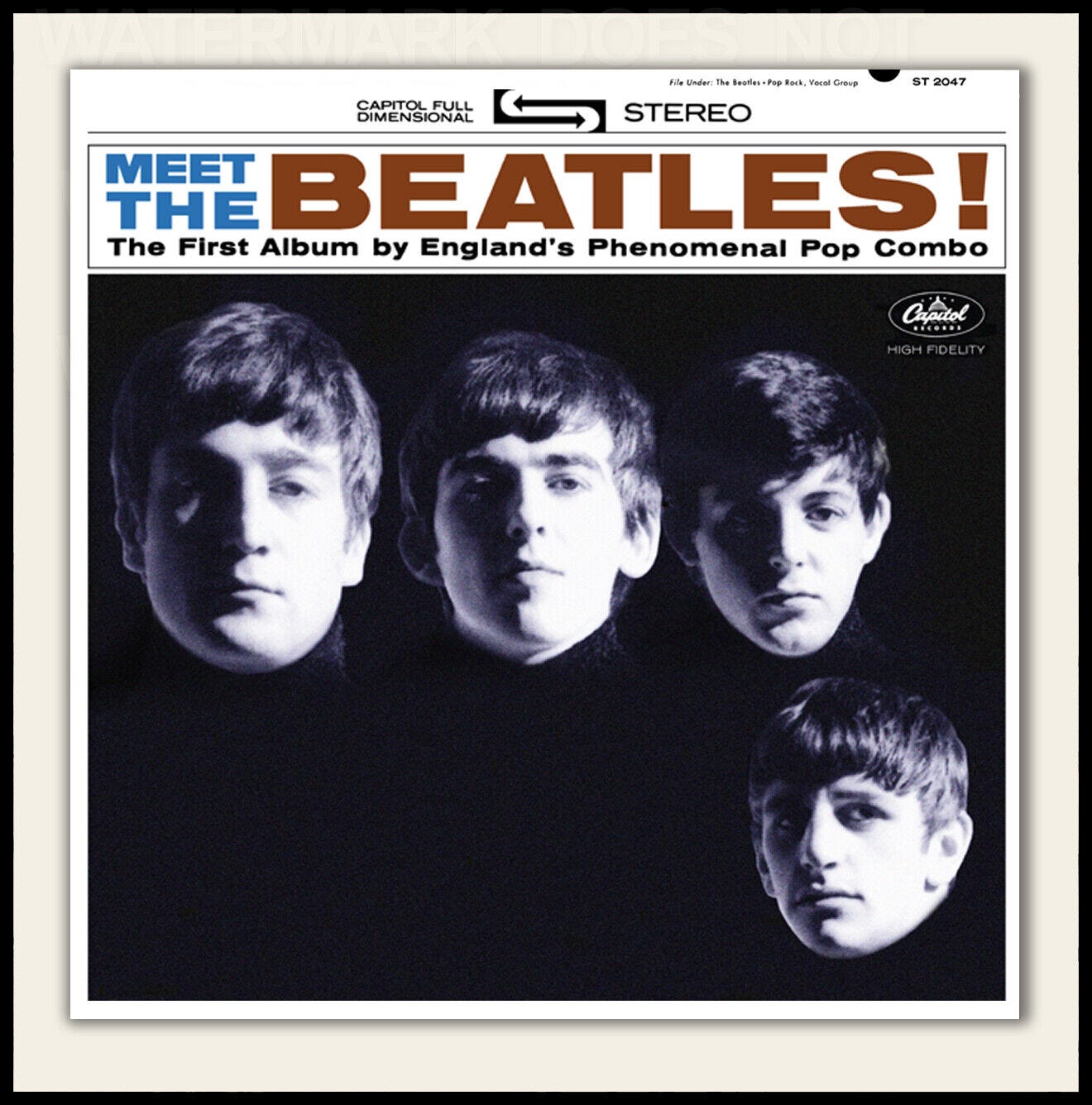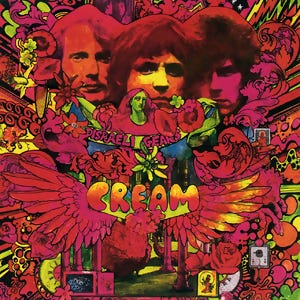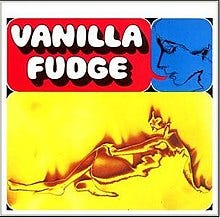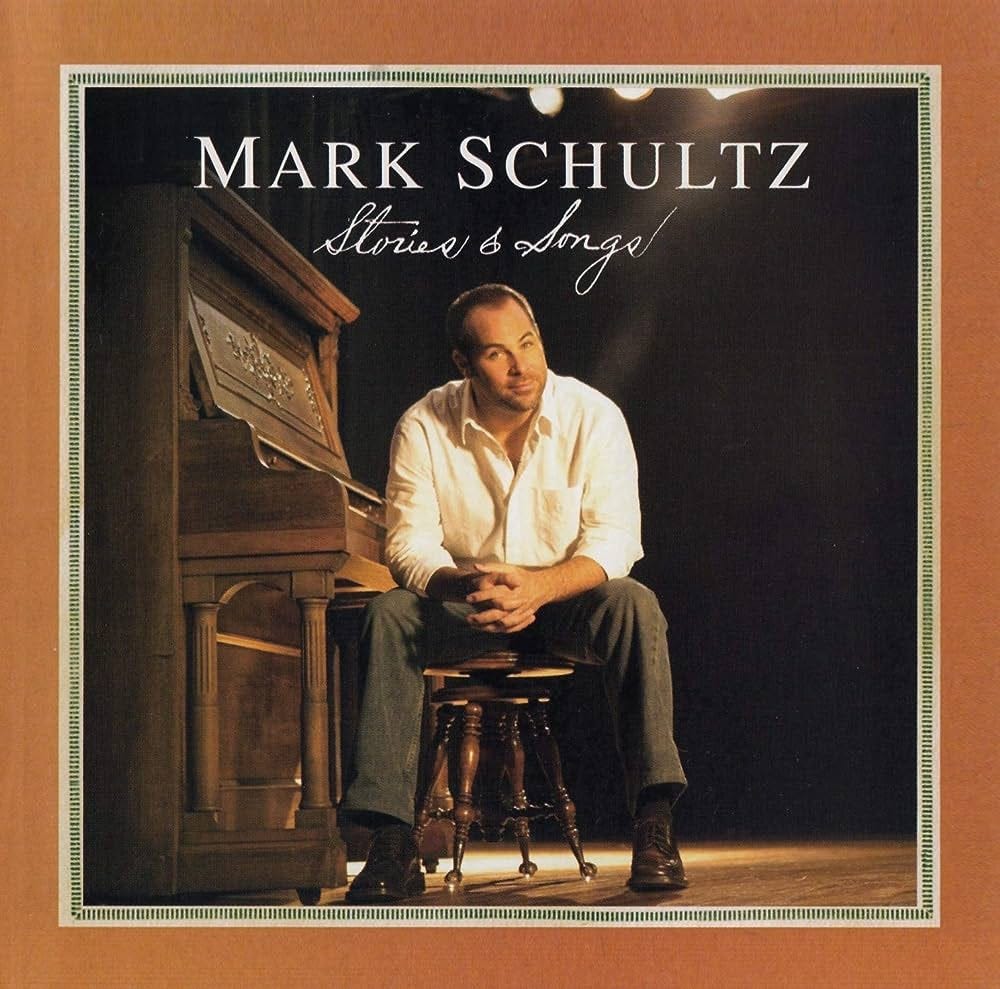I always enjoy interviews with musicians about their “influences.” All the 60s rockers said “Oh, blues. You know, B.B. King, Blind Lemon Jefferson, those guys.” I often wonder, did you even LISTEN to them? Most people’s exposure to the blues came through Eric Clapton, John Mayall, Johnny Winter, and other white musicians who did covers of their songs. Similarly, the Beatles recorded half a dozen Motown and Chuck Berry hits—-even when most young people had never heard of Chuck Berry, and their experience with Motown was from Smokey Robinson, the Supremes, or the Four Tops.
In other words, I often wonder, what did they actually listen to? In 2010, for a chapter in my book Seven Events That Made America, I interviewed almost 100 rock and rollers or read closely their biographies. With only two exceptions (Billy Joel and Keith Emerson), every single one cited the Beatles as their inspiration to become musicians, and probably half cited specifically the song “I Want to Hold Your Hand” as the moment they came to Elvis, er . . . Jesus.
While I listened to music seriously since about 1966, I didn’t start playing for another two years. But I had heard music—-just not rock music. And I had played classical music on piano for several years before I took up drums. So what were the songs of my life (and everyone will have their own playlist).
The first two records I ever owned were the old 33 1/3 “LP” records. I recall getting them almost simultaneously, and do not recall how I ever got a record player—-or, more precisely, why my mother ever bought me one. I suspect it was because we owned some resort cabins in the White Mountains of Arizona, which is to say, in the middle of nowhere. The largest town was Springerville, probably population between 5,000 and 10,000 at the time. There was nothing to do but fish, hike, and, well, hang out at campfires. I think my mother took note of my boredom and got me a record player with the old-fashioned spindle that would “drop” a new album when the previous one finished. Anyway, I had two albums. One was an amazing album that I love to this day, “Bossa Nova USA” by the Dave Brubeck Quartet. I didn’t know jazz, and probably if I had been introduced to heavier jazz, I wouldn’t have liked it. But this was sort of the “Top 40” version of jazz. DBQ played several songs, including the “Trolley Song,” in Bossa Nova style and I went nuts, playing it over and over. The other was totally different, a compendium of show tunes that included “Maria,” “Mack the Knife,” the themes from “El Cid” and James Bond, “the Sweetest Sounds,” “I Believe in You,” and the “Magnificent Seven” theme. There were a couple I didn’t love, including “Maria,” but the rest had the same effect on me. Before I ever picked up a drumstick, I had a (shallow) introduction to jazz and Broadway.
I can’t recall buying any other music, but was thoroughly embarrassed when in junior high I heard “Walk Like a Man” by the Four Seasons. Loved it, but when I asked the “with it” girl ahead of me in class if she’d ever heard it, she gave me a snarly, “Who hasn’t?” So I didn’t mention music to anyone for a while.
Then a friend had a party and was playing “Meet the Beatles,” over and over. I was blown away by the sound, and the drummer!! I got the album, and sometime about that time I started to play drums. Every single song on “Meet the Beatles” and “The Second Album” were drum tutorials by Ringo. I played along with every beat. Ringo taught me drumming.
When it came time to start a band, I finally ended up with a group that had limited vocals, so we gravitated to songs easy to sing, like, “Do You Believe in Magic?” by the Lovin’ Spoonful, and “Domino” by Van Morrison. I didn’t particularly like those songs, but we just couldn’t do harmonies well.
However, before long, we got a new guitarist (a big white guy) who fancied himself a blues player, and naturally he began introducing us to all the other white blues players like Mike Bloomfield and Clapton and Johnny Winter. When Disraeli Gears came out I was jazzed. We learned most of the songs. But Mike soon insisted we go see this black guitarist named Jimi Hendrix. That was an entirely new level. “Sunshine of your Love” and “Foxy Lady” were two songs that every band had to play.
Then we got a real vocalist in the band, my friend Bud who at the time had an amazing voice and could sound like Jim Morrison. We did all the Doors tunes, but my favorite still from that era was “Break on Through,” especially toward the end when Morrison screamed, “oh . . .OH YEAH!”
Mike introduced me to “Johnny Winter And,” one of my top ten albums. It was a sad irony that Winter did not like rock and roll and preferred blues, and to me this album was his very best. Mike also glommed onto the San Francisco sound and played an album that I still have in my top ten today, “Moby Grape.” As I related in my book with Vanilla Fudge singer Mark Stein, Moby Grape was at a hotel the Fudge stayed at and were seriously, seriously messed up on drugs. They only did two albums, and were out of it by the time their second came along. But to this day “Moby Grape” is a classic for great guitar work and “grunge” singing before such a word existed. I also came to love Jefferson Airplane’s “Surrealistic Pillow,” another in my top 10.
When Hendrix made his second appearance in Arizona, Vanilla Fudge opened for him and it was no contest. The Fudge were individually and collectively at their peak, coming off their top selling album, “Vanilla Fudge” and their iteration of the Motown song, “You Keep Me Hangin’ On.” We individually fell in love with each respective member of the band—-I idolized Carmine Appice, and when Fudge broke up it devastated us. But the new band “Cactus,” with Carmine & bass player Tim Bogert, despite the weird vocals of Rusty Day, was supercharged and we became instant groupies. There are no better driving songs than “Parchman Farm” and “Swim.”
By then we also loved Deep Purple. Their “Machine Head” album is in my top 10, and arguably the best driving song ever, “Highway Star.” Blackmore, in my view, was right up in the Holy Trinity of Jeff Beck, Eric Clapton, and Jimi Hendrix and was the master of the tremolo bar.
At the same tim I was listening to hard boogie with Cactus, I got the latest Yes album, “Close to the Edge.” I never heard a band play one song as the entire side of an album, especially one so incredibly intricate with so many different layers. Another of my top 10s.
A variety of new sounds, from disco to punk, came out, but I was still drawn to the more traditional power bands that had great vocalists like Journey. But I liked a band even more than Journey—Survivor, and their song “I Can’t Hold Back” from “Vital Signs”—-a great, but not perfect, album—-said more to me than even some of Journey’s admittedly more popular songs.
Eventually I left the bands, played only sporadically, and got the newest gadget, a CD “tower” that could play several CD albums. Two stood out: Sade (yes, Sade) and her “Sweetest Taboo”—-incredible mood music—-and Howard Jones, whose “Dream Into Action” didn’t have a bad track. While a third album wasn’t quite as good top to bottom, later in that decade the System had a great album that contained “our song” when it came to my wife, “Don’t Disturb This Groove.”
As a professor, I rarely attended concerts, and heard few new bands that really got me, but I loved Huey Lewis and the News, particularly because of their phenomenal guitarist, Johnny Colla, and their exceptional drummer. Bill Gibson. These guys were so much alike in their playing—-incredibly tasteful, rarely did what you would expect, and perfect for every song. “Sports” is another top ten album.
By the early 2000s Christian music began to turn out stuff that was neither trite nor antiseptic. I fell in love with “Avalon,” but in by far one of the greatest albums ever—-with only one song an original—-was Michael W. Smith’s “Worship.” We met sometime around 2010, and he told me that he didn’t expect much from the album, but that it seemed like a good concert to record. It became his best-selling album. Not a single bad song, and many of the songs with that chorus give me chills to this day, including “Draw Me Close.”
Likewise, during the Iraq War Christian artist Mark Schulz did a 6/8 song that was reminiscent of Billy Joel’s “Piano Man,” called “Letters from War” that would make you cry every time. He said they invited him to play at the Pentagon and that generals were crying. I believe it.
I continue to love a wide variety of music, from Pink to Kanye, from Clint Black to Dua Lipa, from Duran Duran to Michael Jackson. Not a rap fan, and I don’t like metal (even though I love “Enter Sandman.”) And yes, I liked Rick Springfield’s album. To each his own.
Larry Schweikart
Rock drummer, Film maker,NYTimes #1 bestselling author
See more in my autobiography, The Rhythm of History
https://www.amazon.com/Rhythm-History-autobiography-Larry-Schweikart-ebook/dp/B0C6M6SD5K/ref=sr_1_1?crid=8ZPIWUYWYLZF&keywords=the+rhythm+of+history+larry+schweikart&qid=1693792843&sprefix=The+Rythm+of+histo%2Caps%2C147&sr=8-1
h
